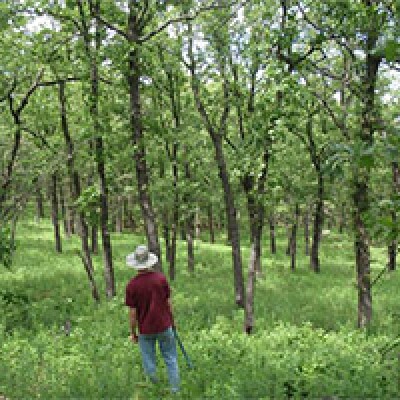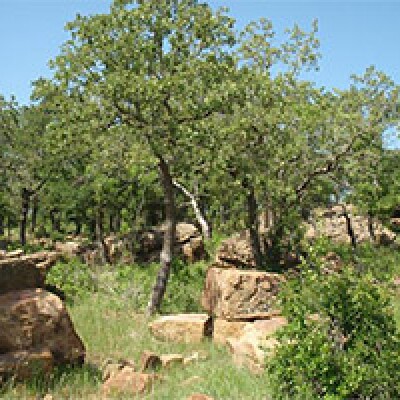Post Oak (Quercus stellata)


The Cross Timbers forests of central North America contain some of the largest tracts of old-growth forests remaining in the continental United States and are predominantly populated with two species of oak: post oak (Quercus stellata Wangenh.) and blackjack oak (Q. marilandica Münchh.). Originally, these forests covered nearly 79,062 km2, but remnant old-growth stands are now estimated to cover only about 1200 km2 ranging from eastern Oklahoma to North Texas. The remnant stands in eastern Kansas have never been spatially quantified. The remaining stands of old-growth forest are highly fragmented but relatively undisturbed because they grow in areas that are very rocky and difficult to navigate, farm, or develop. Post oak is a slow-growing tree, typically 9–12 m tall with trunk diameter of 38–46 cm in the Cross Timbers eco-region. Because post oak is such a slow-growing species, fire is necessary to maintain post oak as the dominant canopy species.
Post Oak Research Publications
Journal Publications
Chatwin W, Carpenter KK, Jimenez FR, Elzinga DB, Johnson LA, Maughan PJ (2014) Microsatellite primer development for post oak, Quercus stellata (Fagaceae). Appl. Plant Sci. 2(10):1400070.